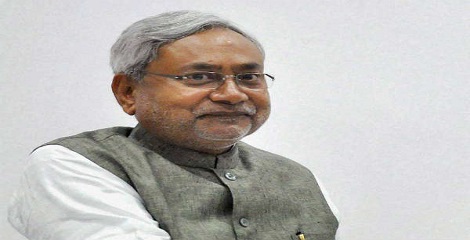On July 27, 2017, Janata Dal (United) President, Nitish Kumar took oath as Chief Minister of Bihar for 6th time. Ending the grand alliance between his party, Congress and Lalu Prasad Yadav’s Rashtriya Janata Dal (RJD), Nitish Kumar will now form the new government with the support of BJP-led NDA.
- On July 27, 2017, senior Bihar BJP leader Sushil Kumar Modi also took oath as Deputy Chief Minister.
- On July 26, 2017, after Nitish Kumar resigned as Chief Minister of Bihar on account of differences with RJD, BJP announced support for JD(U) and Nitish Kumar as chief minister. BJP also added that it will be a part of the government.

- BJP has handed over a list of 14 MLAs for ministerial posts.
- Other ministers will take oath only after the trust vote, which is scheduled for July 28, 2017.
- It is to be noted that in the 243-member Bihar Assembly, RJD currently has 80 seats while JD(U) has 71, BJP has 53 and Congress has 27 seats.
Nitish Kumar resigned as Bihar Chief Minister
On July 26, 2017, Nitish Kumar resigned as Chief Minister of Bihar citing irreconcilable differences with Lalu Prasad Yadav-led coalition partner Rashtriya Janata Dal (RJD) on the issue of corruption. Nitish Kumar submitted his resignation to Bihar Governor Keshari Nath Tripathi.
Events that led to Nitish Kumar’s Resignation as Chief Minister of Bihar:
Since November 2015, a Maha-gathbandhanor Grand Alliance comprising Janata Dal (United), Rashtriya Janata Dal and Congress has been in power in Bihar.
- Nitish Kumar of Janata Dal (United) has been the Chief Minister and Tejashwi Yadav of RJD (Lalu Prasad Yadav’s Son) is the Deputy Chief Minister.
- On July 7, 2017, Lalu and Tejashwi Yadav were named in a corruption case by the Central Bureau of Investigation (CBI).
- Nitish Kumar had requested Lalu Yadav and Tejashwi to publicly clear all the facts regarding the corruption charges. He also hinted that Tejashwi Yadav should rise to the occasion by opting out of the government.
- However, RJD stated that not only will Tejashwi Yadav remain in office, but that Nitish Kuamar’s suggestion of a public and detailed clarification has not been accepted.
- Owing to this adamant stand by RJD, Nitish Kumar stressed that his “zero-tolerance to corruption” policy is unwavering and said ‘the atmosphere had become such that it was impossible to work,”. He added that his conscience told him to quit.
About Nitish Kumar:
Previously Nitish Kumar had served as the Chief Minister of Bihar from November 2005 to May 2014 and had also served as a minister in the Union Government of India.
- In May 2014 he resigned, owning responsibility for his party’s poor performance in the 2014 general elections, and was succeeded by Jitan Ram Manjhi.
- However, he returned to office in February 2015 following political crisis in Bihar.
- In November 2015, he won the state elections with coalition partners, following which he again took charge as Bihar’s Chief Minister.






